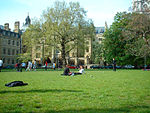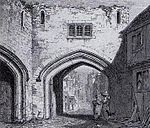UK Gay Liberation Front 1971 Festival of Light action
1971 in LGBT history1971 in the United KingdomLGBT civil rights demonstrationsLGBT history in the United KingdomUse British English from May 2021

On 9 September 1971 the UK Gay Liberation Front (GLF) undertook an action to disrupt the launch of the Church-based morality campaign Nationwide Festival of Light at the Methodist Central Hall, Westminster. A number of well-known British figures were involved in the disrupted rally, and the action involved the use of "radical drag" drawing on the Stonewall riots and subsequent GLF actions in the US. Peter Tatchell, gay human rights campaigner, was involved in the action which was one of a series which influenced the development of gay activism in the UK, received media attention at the time, and is still discussed by some of those involved.
Excerpt from the Wikipedia article UK Gay Liberation Front 1971 Festival of Light action (License: CC BY-SA 3.0, Authors, Images).UK Gay Liberation Front 1971 Festival of Light action
Storey's Gate, City of Westminster Millbank
Geographical coordinates (GPS) Address Nearby Places Show on map
Geographical coordinates (GPS)
| Latitude | Longitude |
|---|---|
| N 51.5 ° | E -0.13 ° |
Address
Methodist Central Hall
Storey's Gate
SW1P 3AT City of Westminster, Millbank
England, United Kingdom
Open on Google Maps









